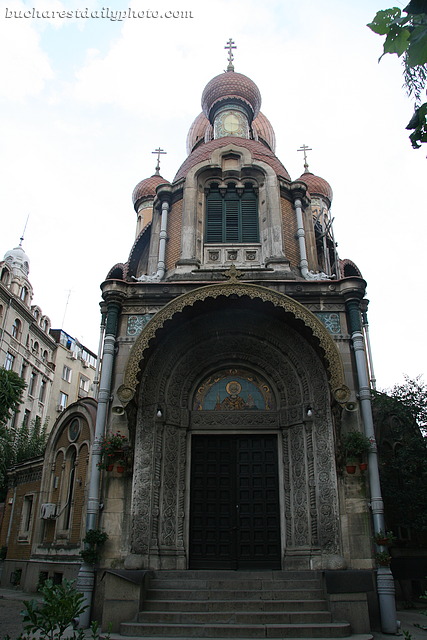If the onion dome architecture of the church in today’s photo makes you think of Russian Orthodox churches than you are on the right path. This is Bucharest’s Russian Church, or St. Nicholas Church after Emperor Nicholas II of Russia whose court provided the 600.000 gold rubles which were used for the construction of the building. The church was destined to be used by the employees of the Russian Embassy and by Russians living in Bucharest and service was initially held in Russian. The onion domes, which are not usual in Romania, were initially covered in gold. Construction lasted from the 1905 – 1909 under the guiding of the Russian architect V. A. Prevbrajenski. During WWI the church was closed and all valuables and the archive were transported to St. Petersburg where they were lost during the Russian Revolution. The church was transferred a couple of times from the authority of the Patriarchate of Moscow to the Romanian government and the Romanian Orthodox Church. The church is located downtown, close to the University of Bucharest and twice in its history it came under the patronage of the university (from 1934 to 1947 and again from 1992 to present time) for the use of the students and professors at the university. This is the reason the church is also known by a third name, “The Students’ Church”.
Aug 312009

It's magnificent! I've never seen an Orthodox church in person and I find the ornate details absolutely fascinating.
It's a gorgeous building. The history's really interesting, too, thanks.
I didn't know the domes are known as onion domes, which is a delicious description of their shape. The church has certainly had an interesting history and has survived a lot lot of turmoil in the past century.
Fascinating post! The onion dome architecture has made it even to Buenos Aires. See here